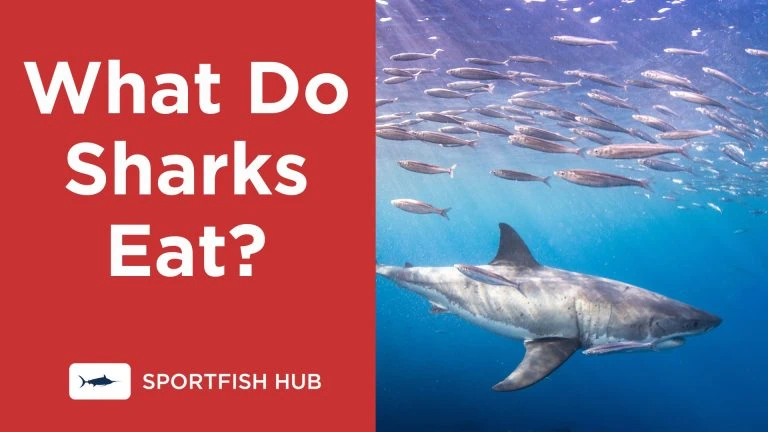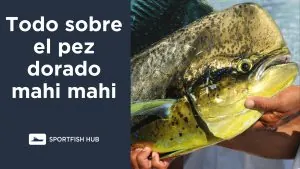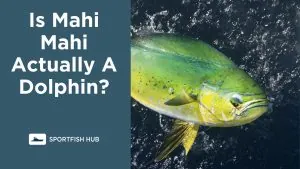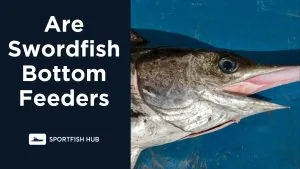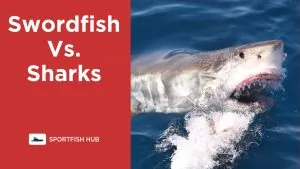As apex predators, sharks are equipped with evolutionary hunting adaptations that make them effective killers in the ocean. With over 500 shark species inhabiting diverse aquatic environments, what do sharks eat?
You might also enjoy reading “How do Sharks Hunt“.
What Sharks Eat The Most
Fish make up the majority of most shark species’ diets. Small bony fishes like sardines, herring, and anchovies are the most common prey. That being said, there is still some diversity between different species of sharks and what they eat. Below is a helpful table:
Shark Diet Table
| Shark Species | Primary Prey | Secondary Prey | Hunting Strategy | Tooth/Jaw Adaptations |
|---|---|---|---|---|
| Great white | Seals, sea lions | Fish, cetaceans, seabirds | Ambush from below | Serrated triangular teeth for cutting |
| Tiger shark | Sea turtles, fish | Birds, mammals, crustaceans | Scavenging, ambush | Serrated teeth cut through shells |
| Mako | Tuna, mackerel, swordfish | Marlin, smaller sharks | High-speed pursuit | Pointed teeth grip slippery prey |
| Bull shark | Marine and freshwater fish | Mammals, elasmobranchs | Stalking, ambush | Powerful jaws and serrated teeth |
| Nurse shark | Crustaceans, fish | Mollusks, seabirds | Sucking in prey | Small teeth crush and grind food |
- Great white sharks – These sharks are opportunistic predators that eat fish like tuna, rays, smaller sharks, seals, sea lions, dolphins, whales, seabirds, sea turtles, and even dead animals. They have also been known to attack humans on rare occasions. Great whites typically take large bites out of their prey and then retreat while it bleeds to death before returning to feed.
- Tiger sharks – Tiger sharks have extremely diverse diets. They eat sea turtles, seals, birds, smaller sharks, fish, squid, crabs, lobsters, jellyfish, sea snakes, rays, and even garbage or carrion. They have sharp teeth that are adapted for cutting rather than tearing.
- Bull sharks – Bull sharks eat bony fish, sharks, rays, dolphins, turtles, birds, crustaceans, squid, sea snakes, and even land mammals like dogs that venture into the water. They have a wide flat head and sharp triangular teeth.
- Hammerhead sharks – Hammerheads feed mainly on rays, smaller sharks, bony fish, lobsters, crabs, squid, octopus, and snails. Their unique hammer-shaped head may help them detect and pin down prey.
- Nurse sharks – Nurse sharks feed on crustaceans like shrimp, lobster, crabs, urchins, squid, octopus, fish, rays, and even seabirds. They have small sharp teeth that can crush shells and thick skin to protect them from prey that fights back.
- Reef sharks – Reef sharks are active predators in coral reefs. They prey on fish, octopus, squid, lobsters, crabs, sea snakes, sea birds, smaller sharks, rays, and eels. Some species also eat plankton, algae, or jellyfish.
See Also: What Eats Sharks?
The Anatomy of Eating
Sharks have evolved distinct teeth structure and jaw mechanics that are adapted for their dietary habits.
Teeth Structure
- Sharks with sharp, triangular teeth like great whites are well-suited for tearing thick chunks of flesh from large prey like seals.
- Species that feed on shellfish have flattened teeth adapted for crushing and grinding hard materials.
- Sawsharks have serrated teeth that function like steak knives to dig into prey.
- Filter-feeding sharks like whale and basking sharks have tiny, blunt teeth as they don’t need to tear food.
Jaw Mechanics
- Sharks with wide gapes like great whites can exert tremendous bite force and dislocate their jaws to swallow large prey.
- Skates and rays have crushing plates in their jaws specialized for breaking down hard-shelled mollusks and crustaceans.
- Many bottom-dwelling sharks have mouth cavities that act as suction cups to latch onto slippery prey.
- Filter feeders like whale sharks have modified gill rakers that act as sieves to trap tiny plankton and organisms.
Nutritional Aspects of Shark Diets
The caloric and nutritional intake sharks require varies greatly depending on the species. Understanding the energy needs and nutritional value of different prey items provides insight into shark hunting habits and habitat ranges.
Energy Needs
- Sharks typically eat between 0.5-3% of their body weight during a feeding session.
- Larger sharks like great whites require more substantial prey like seals to meet their energy requirements.
- Smaller sharks can survive on smaller fish and invertebrates due to lower overall caloric needs.
- Some species have adapted to go weeks between feedings by storing oil in their livers.
Prey Nutritional Value
- Fish provide protein but minimal fat so sharks must eat greater quantities to get calories.
- Seals, sea lions, and dolphins offer an energy-dense food source due to high fat content.
- Crustaceans and shellfish have moderate fat and protein but provide essential micronutrients.
- Plankton provided minimal nutritional value individually so filter-feeders consume huge quantities.
| Prey | Calories | Fat(g) | Protein(g) |
|---|---|---|---|
| Herring | 70 | 2 | 14 |
| Salmon | 50 | 2 | 10 |
| Seal | 110 | 9 | 15 |
| Shrimp | 30 | 1 | 5 |
| Plankton | 5 | 0 | 1 |
Hunting Techniques by Species
Specialized adaptations and strategic hunting methods allow different shark species to effectively capture and consume their prey.
Great White Sharks
- Use their sense of smell and stealth ambush techniques to surprise seal prey at the surface.
- Their massive jaws deliver explosive bites to inflict mortal wounds rapidly.
- They rip flesh with serrated teeth and violent head shakes to tear off manageable chunks.
Tiger Sharks
- Hunt opportunistically and have highly acidic stomachs to digest nearly any prey.
- Their wide gape allows them to swallow large animals like sea turtles whole.
- Their scavenging habits lead them to hunt in harbors and shallow waters.
Hammerhead Sharks
- Use their unique head shape to enhance their electroreceptive senses for finding hidden prey.
- Pin down rays and flatfish using their widely spread eyes and nostrils.
- Sawing motions with sharp teeth efficiently slice prey into mouth-sized chunks.
Geographic Variation in Diets
The diets and hunting strategies of sharks also differ significantly based on habitat and geographic region. These variations allow them to adapt to find ample food sources in all corners of the oceans.
Tropical vs. Temperate Waters
- Tropical sharks like reef sharks feed on smaller, faster fish like tuna by ambushing them near coral.
- Temperate great whites consume higher-fat seals and sea lions which keep them warm in colder water.
- Bull sharks enter warm, shallow rivers to hunt bass, catfish, and turtles not found in open oceans.
| Tropical | Temperate |
|---|---|
| Smaller prey (fish, invertebrates) | Larger prey (seals, sea lions) |
| Coral reef ambush hunting | Open ocean pursuit hunting |
| Warmer water | Colder water |
Deep-Sea Adaptations
- Bioluminescent lures attract prey in light-scarce depths for lanternsharks.
- Slow metabolisms and extended periods between meals help deep sea sharks adapt to sparse prey.
- Pacific sleeper sharks dive over a mile to eat giant squid and carcasses of whales and seals.
Human Impact on Shark Diets
Increasing fishing pressures and ocean pollution are negatively impacting shark diets and health around the globe.
Overfishing
- Depletion of food sources like tuna and billfish affects open ocean predators like makos and blue sharks.
- Coastal pollution and habitat loss reduce Access to crabs, lobsters, andBottom-dwelling sharks. healthy reef fish that many species depend on.
Pollution
- Chemical runoff can accumulate in shark prey, leading to uptake of heavy metals and toxins.
- Plastics can choke birds, turtles, and mammals eaten by large sharks and lead to intestinal blockages.
Conclusion
In summary, shark diets are incredibly diverse based on specialized adaptations for hunting, swallowing, and digesting all types of marine animals. Understanding what sharks eat provides key insights into their health and habitats which allows us to better protect these important apex predators. Conservation efforts should focus on reducing fishing pressures on prey species and maintaining the balance of ocean food webs to preserve shark populations.
FAQ
-
Do sharks ever get full?
Sharks do not have a true stomach and esophagus like other vertebrates, so they do not have a feeling of “fullness” after eating. They will continue hunting and eating prey as available and digest food slowly.
-
How often do sharks eat?
Sharks may eat only a few large meals per week. Smaller shark species need to eat more frequently, while large sharks like the great white can survive weeks between major feeds.
-
Do sharks chew their food?
No, sharks do not chew their food. They use their serrated, pointed, or flat teeth to grasp prey and then twist and tear off chunks of flesh to swallow whole.
-
Are sharks attracted to period blood?
There is no evidence sharks can detect or are attracted specifically to human menstrual blood. They do detect blood and bodily fluids from prey using their keen senses though.
Conclusion
In summary, sharks are carnivorous predators that eat a wide variety of prey based on their species, habitat, and available food sources. Their jaws and teeth have evolved to capture swift moving fish, bite through turtle shells, cut through blubber, and filter tiny plankton. Understanding what sharks eat is key to conserving these important marine predators.
References and Citations
- Shark Species and Conservation
- Source: NOAA Fisheries
- Shark Species
- Used for: Information on different shark species and their conservation status.
- Shark Anatomy
- Source: Smithsonian Ocean
- Shark Anatomy
- Used for: Detailed information on shark anatomy including teeth and jaw mechanics.
- Shark Diets
- Source: MarineBio
- Shark Diets
- Used for: Information on what different species of sharks eat.
- Shark Conservation
- Source: IUCN Red List
- Shark Conservation
- Used for: Conservation status of various shark species.

